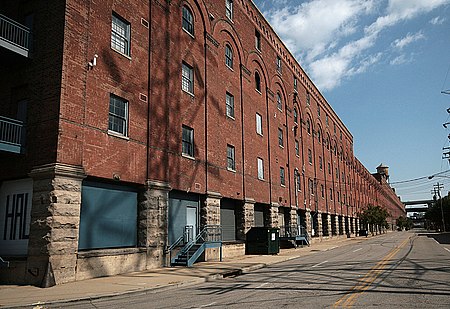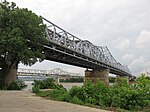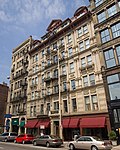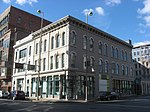Longworth Hall
Baltimore and Ohio RailroadHamilton County, Ohio Registered Historic Place stubsNational Register of Historic Places in CincinnatiOffice buildings in CincinnatiRail transportation in Cincinnati ... and 3 more
Railway buildings and structures on the National Register of Historic Places in OhioRailway freight houses on the National Register of Historic PlacesTransportation buildings and structures in Cincinnati

Longworth Hall is a registered historic building in Cincinnati, Ohio, listed in the National Register on December 29, 1986. Constructed by the Baltimore and Ohio Railroad in 1904 as the B&O Freight Terminal, the building was reported to be the longest structure of its type in the world at 1,277 feet (389 m) long. Camden Yards in Baltimore, a similar structure, is slightly shorter at 1,116-foot (340 m) long. Longworth Hall is 5 stories, while the Baltimore Freight Terminal is 8 stories.
Excerpt from the Wikipedia article Longworth Hall (License: CC BY-SA 3.0, Authors, Images).Longworth Hall
West Pete Rose Way, Cincinnati Queensgate
Geographical coordinates (GPS) Address Nearby Places Show on map
Geographical coordinates (GPS)
| Latitude | Longitude |
|---|---|
| N 39.095555555556 ° | E -84.524444444444 ° |
Address
Longworth Hall
West Pete Rose Way
45203 Cincinnati, Queensgate
Ohio, United States
Open on Google Maps








